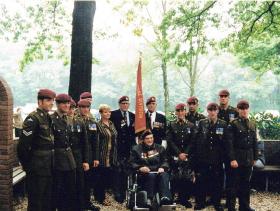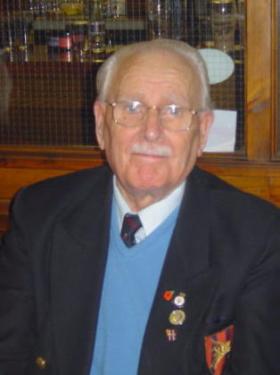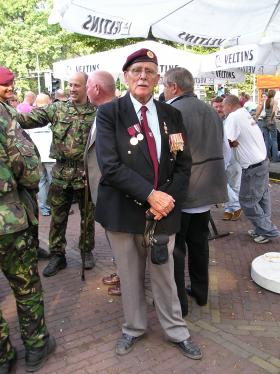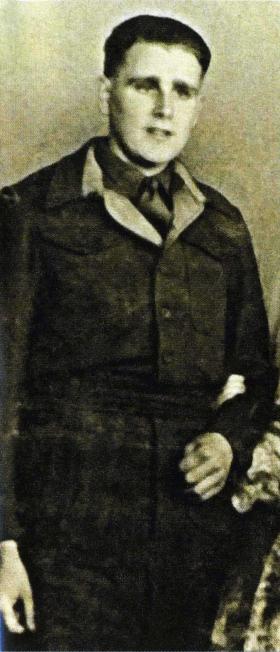Thomas Carpenter was born on 20 July 1924, and attended the Jenkins Street Senior Boys School in Birmingham.
At the outbreak of war he gave up his job in a Paperwork’s factory and became an ARP Messenger Boy. In early 1940 when he was 15, 'Tom' joined the Home Guard. Although he should have been 17, he lied about his age, and in 1942 enlisted into the General Service Corps.
He volunteered for The Parachute Regiment from the Kings Liverpool Regiment, and undertook his Parachute Training Course at RAF Ringway in late 1942. After he passed the course, he was sent to Bulford, joining the 9th Field Company, Royal Engineers.
On 16 April 1943, Sapper Carpenter sailed to North Africa on the MS Bouvaine, and as part as the 1st Airlanding Brigade, assisted in the Ponte Grande bridge at Syracuse in Sicily.
Having returned to the UK, on 17 September 1944, Sapper Carpenter and his unit flew by glider from RAF Fairford to Wolfheze in Arnhem. The Company was already down by 21 sappers, as one of the gliders had crashed near Weston Super Mare, killing all on board. A section was detached from 2 Platoon to reinforce 1 Platoon, which left about 38 men to take and hold the Railway Bridge south of Oosterbeek. Lt Peter Barry from 9 Platoon was severely wounded when the railway bridge was blown up, and three hours later Captain O’Callaghan withdrew from the bridge and took up defensive positions in the town.
Sapper Carpenter recalled: ‘At 11pm that evening I remember a massive explosion, where one of the lads with a flame thrower, was using it to clear a pill box on the town side of the bridge, when he ignited the ammunition hut next to it. We then moved towards the road bridge with John Frost and took up positions on the West side of the ramp to the bridge. There was really heavy street fighting at this stage.
‘Early the next morning, Major Wallace was accidently shot and killed by one of the Bren Gunners. A major fire fight had just been happening when he stumbled through the door of one of the houses we were defending. After no response to a clear challenge, the gunner opened up. A sad loss to the formation at that particular time.
‘On the 20th and early on the 21st of September, I was wounded in the legs and back with shrapnel, as the ferocity of the attacks became more and more effective by the Germans.’
Sapper Carpenter was sheltered in a slit trench with the 2nd Battalion when he was taken to the St Elizabeth Hospital for initial treatment. He was then moved to Apeldoorn and then to Kassel in Germany as a Prisoner of War. After a three day journey, and with his wounds still untreated, he arrived at Stalag 11B in Fallingbostel where he stayed for 5 months. Around this time, Sapper Carpenter collapsed and was given life saving surgery by a British Medical team, who removed a large piece of shrapnel from his back without an anaesthetic.
On 16 April 1945 he was liberated by the 7th Armoured Division, and flown to Blackbush Airfield. He was placed in the 97 Rehabilitation Unit at Great Missenden to recuperate.
Sapper Carpenter was discharged from service on 10 September 1945 due to the injuries he had received nearly a year earlier. He eventually found employment with Lucas Fire and Security Company where he worked for 40 years.
Tom Carpenter died on 1 May 2014.
By Rebecca Blackburn with information supplied by Gil Boyd, BEM.
Read More








Latest Comments
There are currently no comments for this content.
Add Comment
In order to add comments you must be registered with ParaData.
If you are currently a ParaData member please login.
If you are not currently a ParaData member but wish to get involved please register.